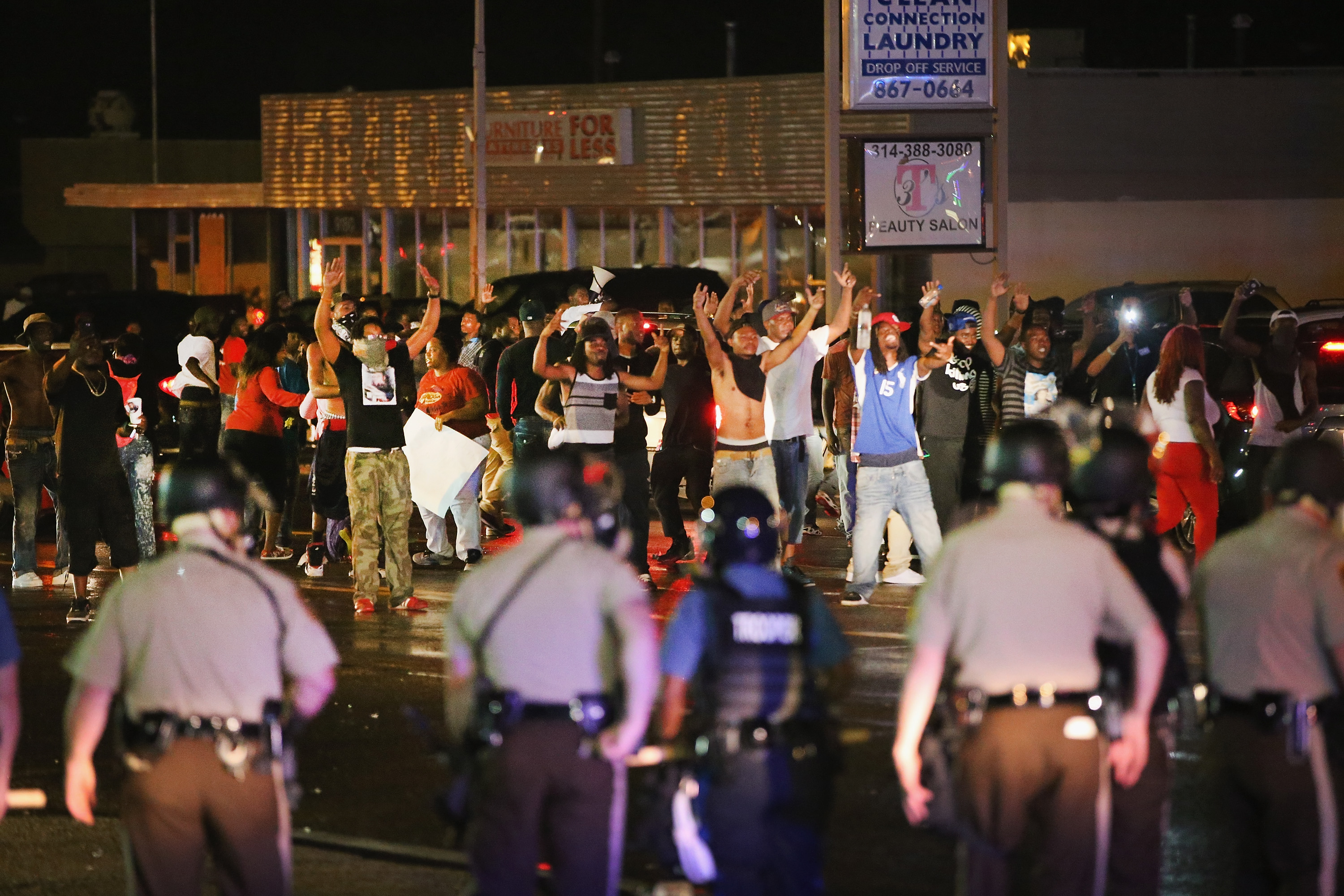| Online: | |
| Visits: | |
| Stories: |
Report: Prosecutors may have misled the Ferguson grand jury about the law for two months
Updated by German Lopez on November 27, 2014, 2:00 p.m. ET @germanrlopez [email protected]
By signing up, you agree to our terms.
St. Louis County prosecutors may have misled the grand jury investigating the police shooting of Michael Brown into believing that Ferguson, Missouri, police officer Darren Wilson was justified in shooting Brown merely because the unarmed black 18-year-old fled from the officer, according to a review of the grand jury documents by MSNBC’s Lawrence O’Donnell.
Before Wilson testified to the grand jury on September 16, prosecutors gave grand jurors an outdated statute that said police officers can shoot a suspect that’s simply fleeing. This statute was deemed unconstitutional by the US Supreme Court in 1985; the court ruled that a fleeing suspect must, at least in a police officer’s reasonable view, pose a dangerous threat to someone or have committed a violent felony to justify a shooting.
Prosecutors, who had full control of the evidence presented to the grand jury, took more than two months to correct their mistake, O’Donnell said. The prosecutors on November 21 — just three days before the grand jury reached a decision — gave the correct standards to the grand jury. But as O’Donnell explained, the prosecutors didn’t specify what exactly was wrong with the outdated statute — and they didn’t even clearly say, after they were asked, to the grand jurors that Supreme Court rulings do indeed override Missouri law.
No one has disputed that Brown did, at one point, run from Wilson. The legal debate, based on eyewitness testimony, has always centered on whether Brown attempted to surrender during the final moments of his encounter with Wilson. If Brown did attempt to surrender, Wilson may have been on the wrong side of the law when he killed the teen.
But the prosecutors’ mistake, as explained by O’Donnell, effectively bypasses that legal debate by potentially misleading grand jurors into thinking that Wilson was justified in shooting just because Brown fled.
As Vox’s Amanda Taub explained, the legal bar for justified police shootings is already fairly low. Police officers only have to reasonably perceive that a suspect presents a threat, even if the threat isn’t real. If prosecutors misleadingly lowered the bar even further, it’s no wonder the grand jury didn’t force Wilson to stand trial.
Was the shooting of Michael Brown legal?
In the 1980s, a pair of Supreme Court decisions — Tennessee vs. Garner and Graham v. Connor — set up a framework for determining when deadly force by cops is reasonable.
Constitutionally, “police officers are allowed to shoot under two circumstances,” David Klinger, a University of Missouri-St. Louis professor who studies use of force, told Vox. The first circumstance is “to protect their life or the life of another innocent party” — what departments call the “defense-of-life” standard. The second circumstance is to prevent a suspect from escaping, but only if the officer has probable cause to think the suspect’s committed a serious violent felony.
The logic behind the second circumstance, says Klinger, comes from a Supreme Court decision called Tennessee vs. Garner. That case involved a pair of police officers who shot a 15-year-old boy as he fled from a burglary. (He’d stolen $10 and a purse from a house.) The Court ruled that cops couldn’t shoot every felon who tried to escape. But, as Klinger says, “they basically say that the job of a cop is to protect people from violence, and if you’ve got a violent person who’s fleeing, you can shoot them to stop their flight.”

Protesters in Ferguson, MO. (Scott Olson/Getty Images)
For the grand jury in Ferguson, the question was whether Wilson was aware that Brown allegedly took part in a robbery prior to the shooting. Wilson said he became aware during the encounter that Brown was a robbery suspect and radioed the realization in as soon as he knew.
The key to both of the legal standards — defense-of-life and fleeing a violent felony — is that it doesn’t matter whether there is an actual threat when force is used. Instead, what matters is the officer’s “objectively reasonable” belief that there is a threat.
That standard comes from the other Supreme Court case that guides use-of-force decisions: Graham v. Connor. This was a civil lawsuit brought by a man who’d survived his encounter with police officers, but who’d been treated roughly, had his face shoved into the hood of a car, and broken his foot — all while he was suffering a diabetic attack. The court didn’t rule on whether the officers’ treatment of him had been justified, but it did say that the officers couldn’t justify their conduct just based on whether their intentions were good. They had to demonstrate that their actions were “objectively reasonable,” given the circumstances and compared to what other police officers might do.
And what’s “objectively reasonable” changes as the circumstances change. “The moment that you no longer present a threat, I need to stop shooting,” said Klinger. According to the St. Louis County Police Department’s account, Wilson fired one shot from inside the police car. But Brown was reportedly killed 150 feet away, after several shots had been fired. To justify the shooting, Wilson would need to demonstrate that he feared for his life not just when Brown was by the car, but even after he started shooting. The officer would need to establish that, right up until the last shot was fired, he felt Brown continued to pose a threat to him whether he actually was or not.
“One can’t just say, ‘Because I could use deadly force ten seconds ago, that means I can use deadly force again now,’” says Walter Katz, a California attorney who specializes in oversight of law enforcement agencies.
http://www.vox.com/xpress/2014/11/27/7298711/ferguson-grand-jury-mistake






NEWS FLASH: white teenager was approached by a black cop after running from a store where the kid had just shoplifted….the white teenager attacked the black cop, hitting him several times in the face and on the back of the neck. Then the white kid grabbed the officer’s gun to take it away from him. The gun went off several times as they struggled.
The white kid got scared and ran. That would have been the end of it, but for some strange reason, he turned back and ran towards the black cop. He charged the cop full speed with his head down. Was this guy hopped up on amphetamines or something? How crazy was that?
The cop fired on the white kid. He was so hyped up and determined to take down the cop that it took seven bullets to stop him.
The white citizens of the black town were outraged. They protested. Some of them burned down white-owned businesses to protest after the black grand jury no-billed the black cop.
IT KIND OF READS DIFFERENTLY WHEN THE COLORS ARE TURNED AROUND, HUH?